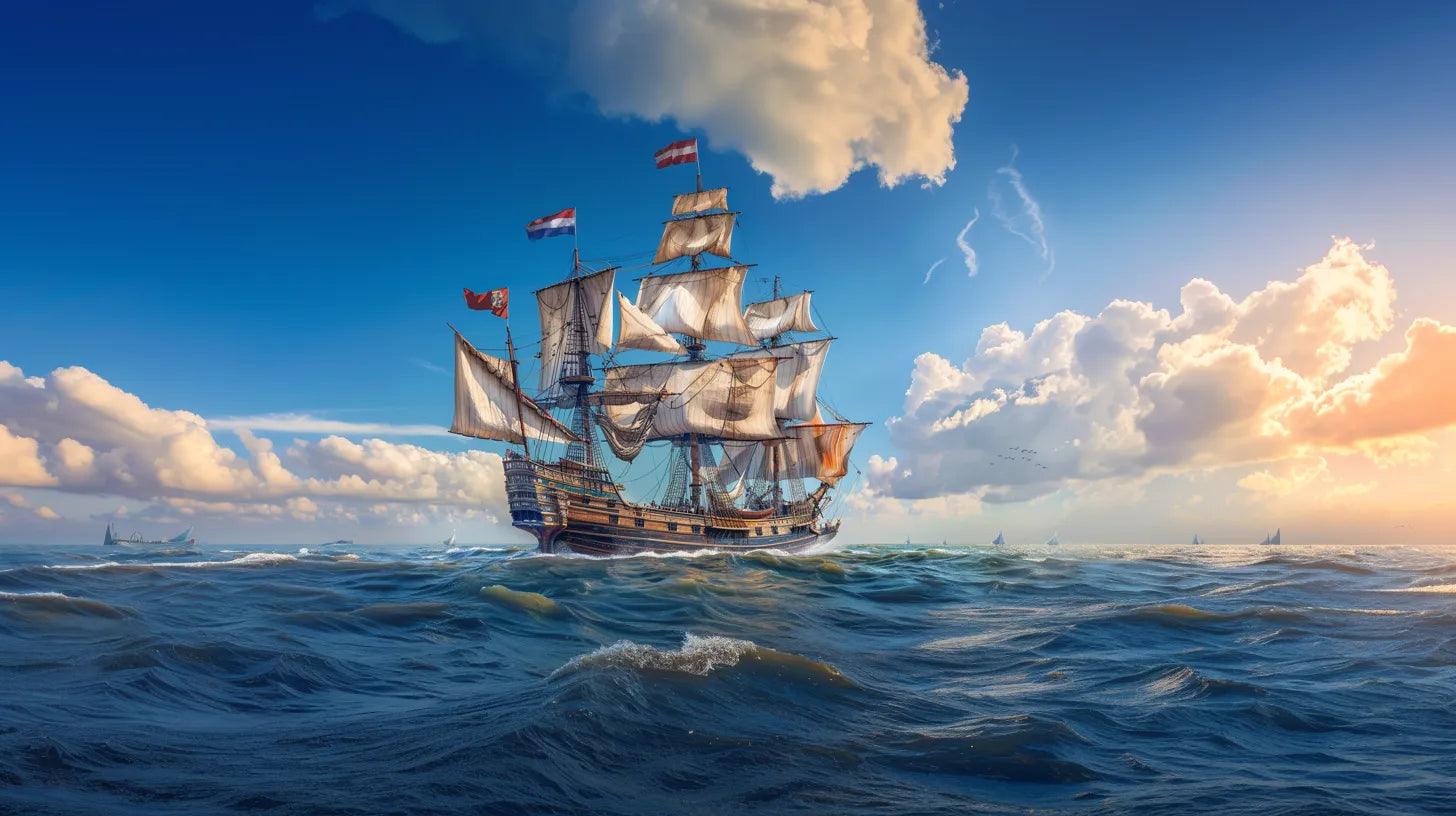
Akerendam: The Enigmatic Voyage of From Glory to the Depths
The Akerendam, a remarkable vessel of the Dutch East India Company (VOC), embarked on its maiden voyage in 1724, destined for Batavia, laden with a fortune in gold and silver. This narrative delves into the ship's journey, the catastrophe that led to its sinking, the efforts to salvage its riches, and the legacy that followed, illustrating a fascinating chapter in maritime history.
The Maiden Voyage
Constructed in 1724, the Akerendam set sail on January 19, 1725, with two companion ships. Its mission was to transport 19 chests filled with gold and silver coins to Batavia, present-day Jakarta, for trade in the lucrative spice markets of the East Indies. The ship, however, never reached its destination, meeting a tragic fate off the coast of Runde Island, Norway, on March 8, 1725. Caught in a severe snowstorm, the Akerendam drifted perilously and eventually succumbed to the icy waters of the Norwegian west coast, taking all 200 souls aboard to their watery graves.
Discovery and Salvage
The immediate aftermath saw some attempts at recovery, with a few chests of coins salvaged in the months following the sinking. However, it wasn't until nearly 250 years later, in 1972, that the Akerendam would reveal its hidden treasures to the world. Rediscovered by a trio of Swedish and Norwegian sports divers, the wreck yielded approximately 57,000 gold and silver coins, marking it as Norway's largest coin find. The salvaged coins included rare Dutch gold ducats and a plethora of silver coins, significantly enriching our understanding of the VOC's extensive trade network and the era's maritime commerce.
The Akerendam's Legacy
The discovery of the Akerendam's treasure, often referred to as "the Runde Treasure," has had a profound impact on both historical scholarship and the public imagination. The Norwegian share of the treasure was divided between the Museum of Cultural History's Coin Cabinet and Bergen Maritime Museum, with parts of the collection later exhibited at Runde Miljøsenter, bringing the story full circle back to the island near where the Akerendam met its end.
The divers who played a crucial role in rediscovering the Akerendam were awarded a significant portion of the treasure, which was auctioned in Switzerland in 1978, further distributing pieces of this story across the globe. This saga not only highlights the perils of maritime travel in the 18th century but also underscores the enduring allure of shipwreck treasure, captivating the minds of historians, archaeologists, and treasure hunters alike.
Conclusion
The Akerendam's voyage from a hopeful expedition to its tragic demise and the subsequent rediscovery of its cargo centuries later is a poignant reminder of the risks undertaken in the pursuit of wealth and the unpredictable nature of the sea. The ship's story, from its laden departure to the eventual unearthing of its long-lost riches, continues to fascinate and serves as a testament to the enduring legacy of maritime exploration and the timeless quest for treasure.




